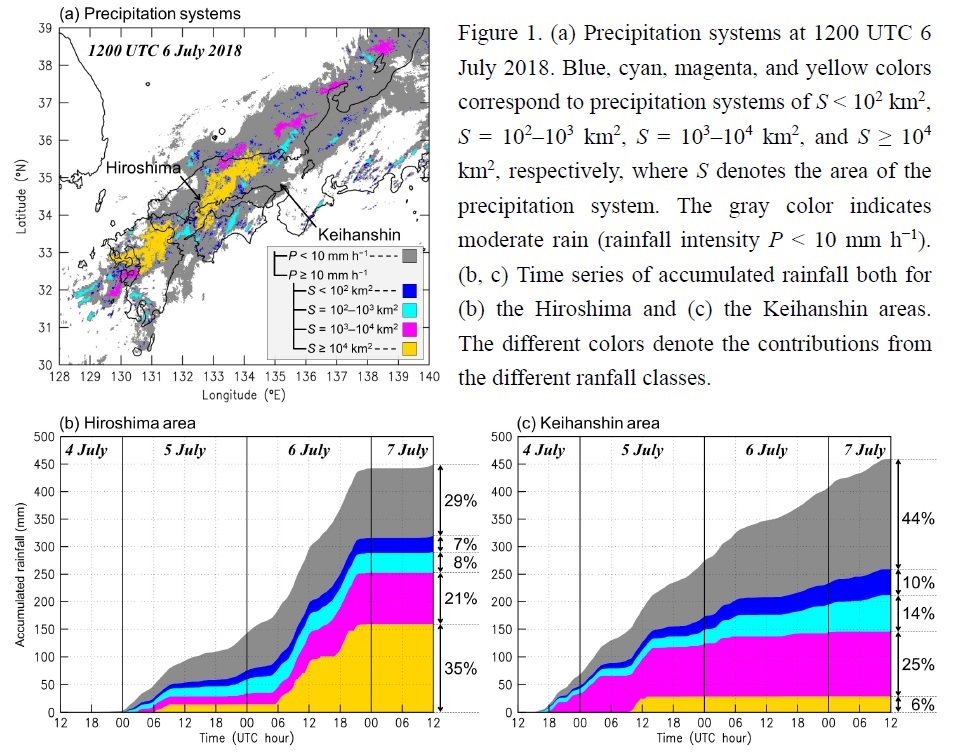Graphical Abstract
Sueki, K., and Y. Kajikawa, 2019: Different precipitation systems between Hiroshima and
Keihanshin during extreme rainfall event in western Japan in July 2018. J. Meteor. Soc. Japan, 97,1221-1232.
Special Edition on Extreme Rainfall Events in 2017 and 2018
https://doi.org/10.2151/jmsj.2019-063
Graphical Abstract with highlights
Plain Language Summary: During the heavy rainfall event in western Japan in July 2018, many differently-sized precipitation systems appeared one after another. This paper suggests that particularly large precipitation systems with areas of more than 10,000 km2 increased the risk of deadly sediment disasters during the rainfall event. Such a large precipitation system occurred when the wind speed was significantly different between the lower and upper atmosphere.
Highlights:
- During the heavy rainfall event in western Japan in July 2018, both the Hiroshima and Keihanshin areas were subjected to unusual rainfall amounts but their damages were significantly different.
- In the Hiroshima area where the number of sediment disasters was significantly larger, rainfall caused by large precipitation systems with areas equal to or larger than 104 km2 were dominant.
- Such a large precipitation system occurred under the condition that vertical wind shear in the 0.5–6.0 km above ground level layer was relatively large.







